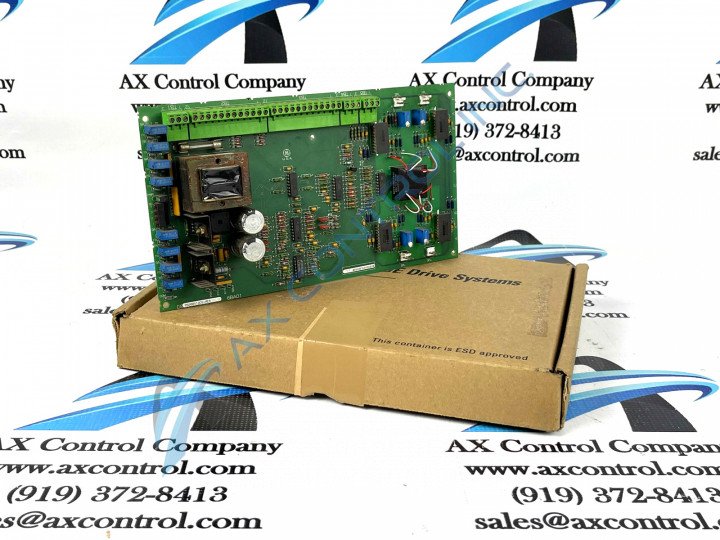About the DS200SIOCG1AEA
This DS200SIOCG1AEA printed circuit board product offering from General Electric, as mentioned above, was originally manufactured for specific functional placement in the Mark V Turbine Control System Series. The Mark V Series that this DS200SIOCG1AEA product belongs to, as explained by its full extended series name, has a set of specific applications in the control and management systems of popular and compatible steam and gas turbine automated drive assemblies. While this is true, this DS200SIOCG1AEA Board's greater Mark V Series has to be considered obsolete as a whole, as it is really a legacy product series from GE whose original manufacture was discontinued due to a manufacturer-identified functional series obsolescence in one of the many years past its initial release. With this being the case, the Mark V Turbine Control System Series that contains this DS200SIOCG1AEA product still attracts some steady demand on its greater figurative automated industrial marketplace, as it still is one of the final-developed GE Mark product series to utilize the Speedtronic control system technology first seen with the release of General Electric's initial Mark I Series.
Hardware Tips and Specifications
As with any Mark V Series product made available to our new and reconditioned inventory, this DS200SIOCG1AEA device achieves its specific Mark V Series functional role with its normal assembly's incorporation of a specific series of functionality-inducing hardware components and component specifications. The GE VME Stand I/O Board DS200SIOCG1AEA features five wire terminals that can connect a maximum of up to 33 signal wires. It is also populated with one fuse and four 2-pin connectors. Three of the wire terminals each support three signal wires. And two of the wire terminals each support twelve signal wires. When you plan to replace the GE VME Stand I/O Board DS200SIOCG1AEA you first diagram where the signal wires are connected. Each terminal is assigned an ID and you can write down the ID on a small strip of paper. Then, attach the paper to the signal wire. In that way, you can quickly reattach the signal wire to the terminals on the replacement board. The terminal IDs are the same on the old board and the replacement board. However, there is a newer version of the same model board that has the latest design changes and components changes. For this reason you might find that some components are arranged differently on the board but you can use the IDs to know where to attach the signal wires, even if they are in a different location.
The board also contains a fuse that protects the board from over current situations. The components might be damaged if too much current is introduced to the board. If you inspect the board and the fuse has blown, you can easily replace it. However, you must make sure the replacement fuse is the same rating as the blown fuse. This DS200SIOCG1AEA printed circuit board product is actually not the originally-developed product of its specific Mark V Series functionality; that would be the DS200SIOCG1 parent VME Stand I/O Board missing this DS200SIOCG1A device's A-rated functional product revision, E-rated secondary functional revision, and A-rated artwork configuration revision. Given this DS200SIOCG1A PCB's above-described obsolete Mark V Series status, it is not surrounded by any wealth of originally-printed instructional manual materials online for the research purposes of this DS200SIOCG1A personalized product page. With this being true, the DS200SIOCG1A functional product number itself can be considered a primary source of DS200SIOCG1A Board hardware component and component specification, as it codes for pertinent DS200SIOCG1A Board details in a selection of consecutive functional naming components. Some of the other relevant hardware details revealed in the DS200SIOCG1AEA functional product number includes this DS200SIOCG1AEA PCB's:
- SIOC functional product acronym
- Group one Mark V Series product grouping
- Normal PCB coating style
- Three-fold revision history













